New images show what areas of the world can be saved or lost if carbon emissions aren’t curbed
The land on which 10% of the world’s population lives could be lost to sea level rise if carbon emission trends continue, new maps and visualizations show.
Fifty major cities, mostly in Asia, and at least one large nation on every continent but Australia and Antarctica are at risk. Many small island nations are threatened with near total loss of their land.
The collection of images and videos produced by the non-profit Climate Central visualize future sea level rise if the world fails to meet emissions reduction targets. The images show what areas of the world can be saved and which could be lost, taking with them the heritage and history of these coastal communities.
Meeting the most ambitious goals of the Paris climate agreement could reduce the sea level rise exposure by roughly half. But the world is not on course to limiting global warming to 1.5C (2.7F), as outlined in the 2015 Paris agreement. Based on current emissions, the Earth is expected to reach and even exceed 3C (5.4F) warming by 2100.
Houston Space Center, present day
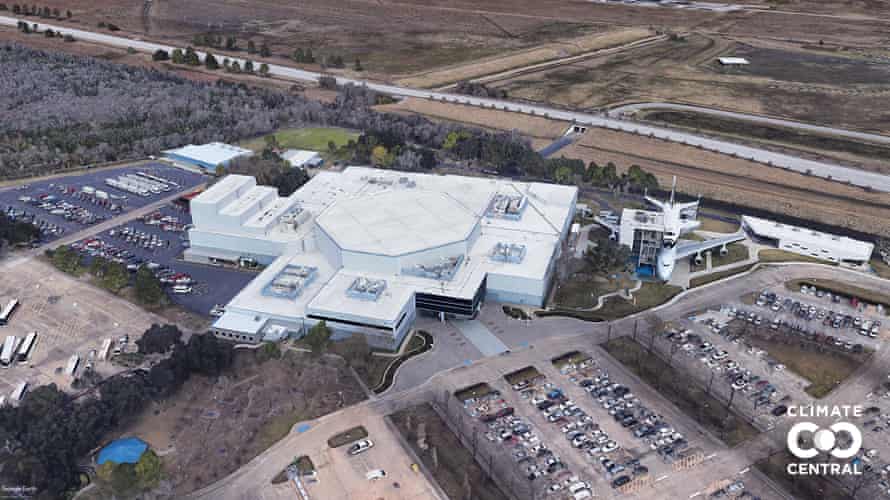
Houston Space Center, +1.5C

Houston Space Center, +3C
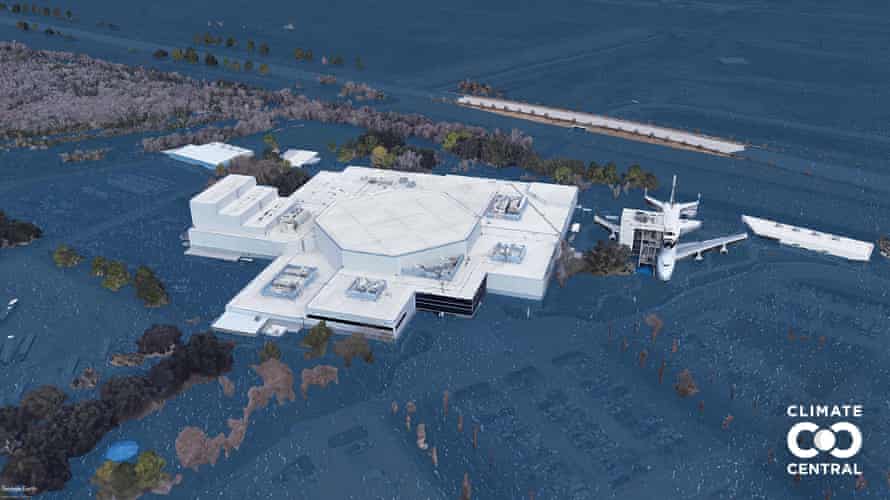
The researchers’ projections show that cities in California, Texas, Florida, Louisiana, as well as many east coast cities will experience intense sea level rise in the coming centuries.
“A picture is worth 1,000 words, or 1,000 years in this case,” the lead author of the paper, Benjamin Strauss, said. Strauss serves as the CEO and chief scientist at Climate Central. While it will take centuries to reach the dire scenarios of cities underwater, the actions taken now and in the coming decades will determine how much of the coastline will be lost in the future.
Next month, representatives from every country in the world will meet in Glasgow for the Cop26 climate conference, where parties will be expected to commit to goals in response to the ongoing climate emergency.
“The decisions that we make at Glasgow and the actions that we take this decade will ramify for hundreds and thousands of years,” Strauss said. “This group is going to be remembered for what they chose: did you choose a thriving future with a livable climate or did you choose to drown the coastal places of the world?”
Santa Monica Pier, present day
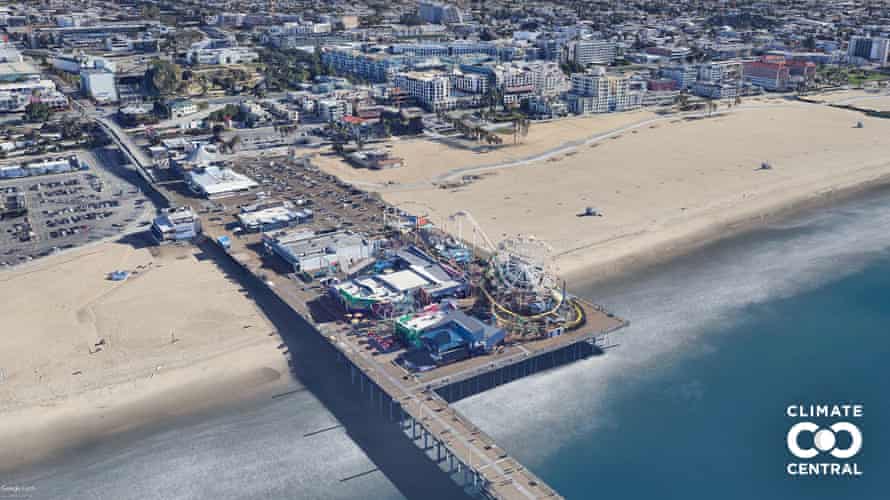
Santa Monica Pier, +1.5C
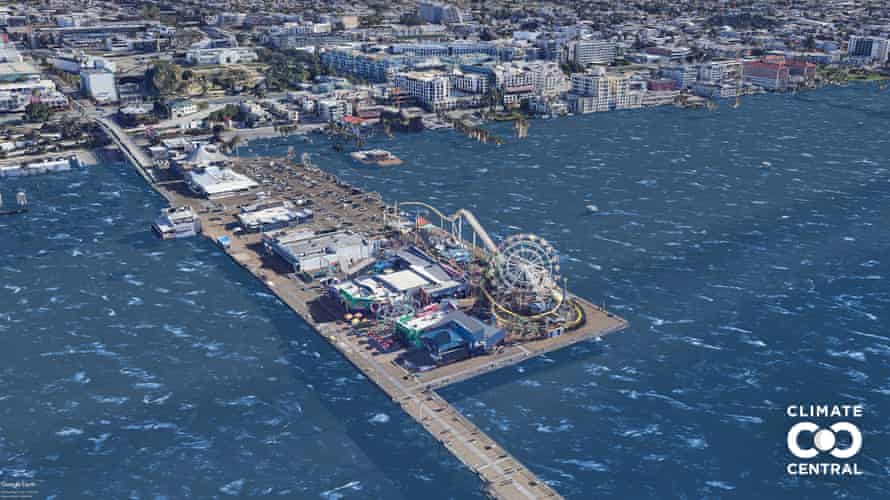
Santa Monica Pier, +3C

The researchers applied different scenarios of warming to determine where communities are most vulnerable within the next 200 to 2,000 years.
“We’ve seen about a foot of sea level rise over the last century,” Strauss said. “Looking forward we’re talking about 10 feet rise in the best case scenario and 30 feet in the worst.” In a higher warming scenario of 4C, sea level could rise to cover land where 15% of the global population live.
Once emitted, carbon dioxide remains in the atmosphere for centuries. The carbon that’s already in the atmosphere is currently warming the planet by 1.1C – meaning that even with no net emissions after 2020, the global mean sea level is set to rise about 1.9 meters (6.2 feet) over the coming centuries.
Boston municipal court, present day
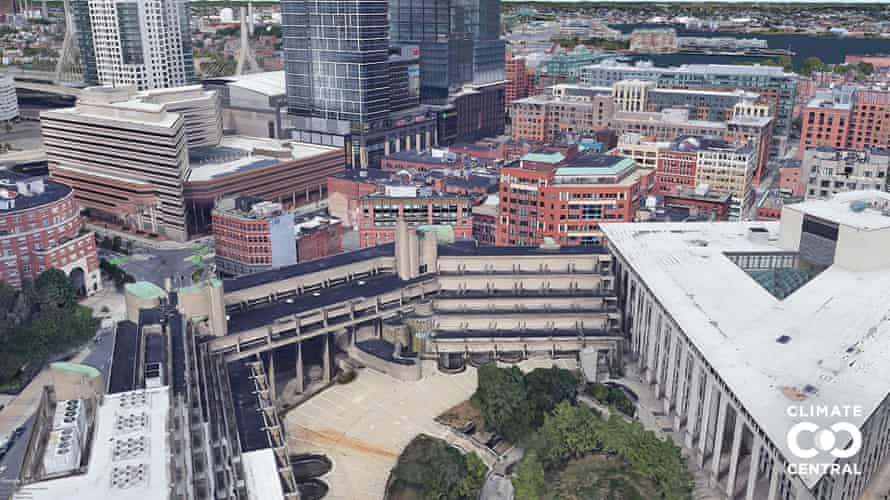
Boston municipal court, +1.5C
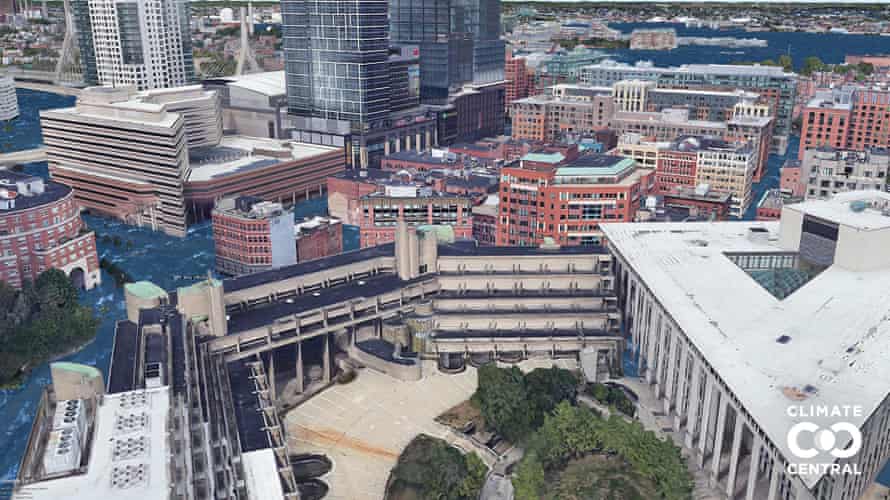
Boston municipal court, +3C
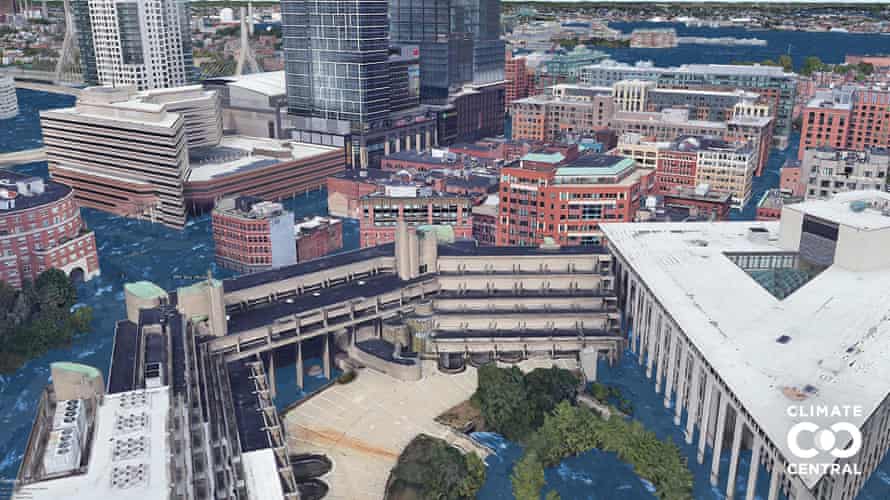
“It’s probably easier for people to think of sea level rise as a problem that you can solve, or that there’s a certain amount of fixed sea level rise that we can plan for,” said Strauss. “But the truth is we’ve switched from a world where sea level was stable, to one where it is on a continual march upwards.”
Current measures to adapt to sea level rise include relocation to higher grounds and defense that involves protecting coastal wetlands, beaches, dunes and oyster beds, raising structures and building sea walls. The adaptation implemented today, Strauss says, is not an endpoint or a solution, but rather a step on a long journey.
